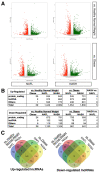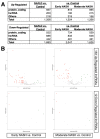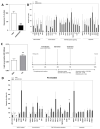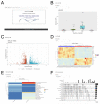Systematic Analysis of Long Non-Coding RNA Genes in Nonalcoholic Fatty Liver Disease
- PMID: 35893239
- PMCID: PMC9332188
- DOI: 10.3390/ncrna8040056
Systematic Analysis of Long Non-Coding RNA Genes in Nonalcoholic Fatty Liver Disease
Abstract
The largest solid organ in humans, the liver, performs a variety of functions to sustain life. When damaged, cells in the liver can regenerate themselves to maintain normal liver physiology. However, some damage is beyond repair, which necessitates liver transplantation. Increasing rates of obesity, Western diets (i.e., rich in processed carbohydrates and saturated fats), and cardiometabolic diseases are interlinked to liver diseases, including non-alcoholic fatty liver disease (NAFLD), which is a collective term to describe the excess accumulation of fat in the liver of people who drink little to no alcohol. Alarmingly, the prevalence of NAFLD extends to 25% of the world population, which calls for the urgent need to understand the disease mechanism of NAFLD. Here, we performed secondary analyses of published RNA sequencing (RNA-seq) data of NAFLD patients compared to healthy and obese individuals to identify long non-coding RNAs (lncRNAs) that may underly the disease mechanism of NAFLD. Similar to protein-coding genes, many lncRNAs are dysregulated in NAFLD patients compared to healthy and obese individuals, suggesting that understanding the functions of dysregulated lncRNAs may shed light on the pathology of NAFLD. To demonstrate the functional importance of lncRNAs in the liver, loss-of-function experiments were performed for one NAFLD-related lncRNA, LINC01639, which showed that it is involved in the regulation of genes related to apoptosis, TNF/TGF, cytokine signaling, and growth factors as well as genes upregulated in NAFLD. Since there is no lncRNA database focused on the liver, especially NAFLD, we built a web database, LiverDB, to further facilitate functional and mechanistic studies of hepatic lncRNAs.
Keywords: NAFLD; NASH; RNA-seq; gene expression; liver; lncRNA.
Conflict of interest statement
The authors declare no conflict of interest.
Figures





Similar articles
-
LncRNA-AK012226 Is Involved in Fat Accumulation in db/db Mice Fatty Liver and Non-alcoholic Fatty Liver Disease Cell Model.Front Pharmacol. 2018 Aug 8;9:888. doi: 10.3389/fphar.2018.00888. eCollection 2018. Front Pharmacol. 2018. PMID: 30135656 Free PMC article.
-
ATP Citrate Lyase and LncRNA NONMMUT010685 Play Crucial Role in Nonalcoholic Fatty Liver Disease Based on Analysis of Microarray Data.Cell Physiol Biochem. 2018;51(2):871-885. doi: 10.1159/000495384. Epub 2018 Nov 22. Cell Physiol Biochem. 2018. PMID: 30466110
-
Long Non-Coding RNA Profiling in a Non-Alcoholic Fatty Liver Disease Rodent Model: New Insight into Pathogenesis.Int J Mol Sci. 2017 Jan 16;18(1):21. doi: 10.3390/ijms18010021. Int J Mol Sci. 2017. PMID: 28275212 Free PMC article.
-
The Role of Long Non-Coding RNAs (lncRNAs) in the Development and Progression of Fibrosis Associated with Nonalcoholic Fatty Liver Disease (NAFLD).Noncoding RNA. 2018 Aug 21;4(3):18. doi: 10.3390/ncrna4030018. Noncoding RNA. 2018. PMID: 30134610 Free PMC article. Review.
-
Long non-coding RNA in Non-alcoholic fatty liver disease.Adv Clin Chem. 2022;110:1-35. doi: 10.1016/bs.acc.2022.06.001. Epub 2022 Aug 31. Adv Clin Chem. 2022. PMID: 36210072 Review.
Cited by
-
Long Noncoding RNAs in the Pathogenesis of Insulin Resistance.Int J Mol Sci. 2022 Dec 16;23(24):16054. doi: 10.3390/ijms232416054. Int J Mol Sci. 2022. PMID: 36555704 Free PMC article. Review.
-
DoxoDB: A Database for the Expression Analysis of Doxorubicin-Induced lncRNA Genes.Noncoding RNA. 2023 Jul 13;9(4):39. doi: 10.3390/ncrna9040039. Noncoding RNA. 2023. PMID: 37489459 Free PMC article.
-
Genetic Risk Loci and Familial Associations in Migraine: A Genome-Wide Association Study in the Han Chinese Population of Taiwan.J Clin Neurol. 2024 Jul;20(4):439-449. doi: 10.3988/jcn.2023.0331. J Clin Neurol. 2024. PMID: 38951977 Free PMC article.
-
Methods and Tools in RNA Biology.Noncoding RNA. 2023 Aug 10;9(4):46. doi: 10.3390/ncrna9040046. Noncoding RNA. 2023. PMID: 37624038 Free PMC article.
-
GAS5 protects against nonalcoholic fatty liver disease via miR-28a-5p/MARCH7/NLRP3 axis-mediated pyroptosis.Cell Death Differ. 2023 Jul;30(7):1829-1848. doi: 10.1038/s41418-023-01183-4. Epub 2023 Jun 19. Cell Death Differ. 2023. PMID: 37337032 Free PMC article.
References
Grants and funding
LinkOut - more resources
Full Text Sources

